- Direct customers to the right products and the right time.
- Build trust and keep shoppers sticking around for longer.
- Gently guide consumers to checkout by answering questions and tackling objections.
Creating a clean, organized site that’s full of rich and engaging content will improve the overall customer experience, but it’s not just about what’s happening on your site.
It’s no secret that shoppers today use multiple channels to purchase — Harvard Business Review says that 73% of shoppers use multiple channels during their shopping journey
— so it’s up to retailers to meet them where they’re shopping.
This is where ecommerce merchandising comes into play. Branding, product placement, rich imagery, and innovative ways of presenting your products across various channels all play a major role in attracting, converting, and retaining customers.
The 7 Essential Steps For Building An Effective Site and Ecommerce Merchandising Strategy
1. Understand Your Customers
It’s impossible to create a great customer experience if you don’t know what your customers want. Dive into your website and channel analytics to identify patterns in customer behavior, top products, and insights into who is buying from you.
This information will help you understand what customers might need from your product detail pages (PDPs) and other content. For example, if you discover that shoppers prefer the red version of your recyclable water bottle, you can turn that into a feature. Similarly, if you learn that your audience loses confidence right before checkout, you can dig into why and create content that tackles last-minute objections, like FAQs and customer reviews.
2. Create a Story on Your Site
Brick-and-mortar stores are intuitive. Shoppers walk through the door, use internal signage to find the department they need, and browse shelves of products that are (obviously) in stock. If they have a question, they might turn to an in-store sales associate for help. It’s harder to create this kind of journey online because there are so many options and distractions.
But if you use your website to tell a story, you can gently guide shoppers on a journey toward the checkout.
When updating your site merchandising to reflect customer needs, keep these criteria in mind:
- Your homepage should reaffirm what kind of products you sell.
- Your product categories should be easy to find.
- It should be relatively easy to uncover stock levels, your brand story, and other important information.
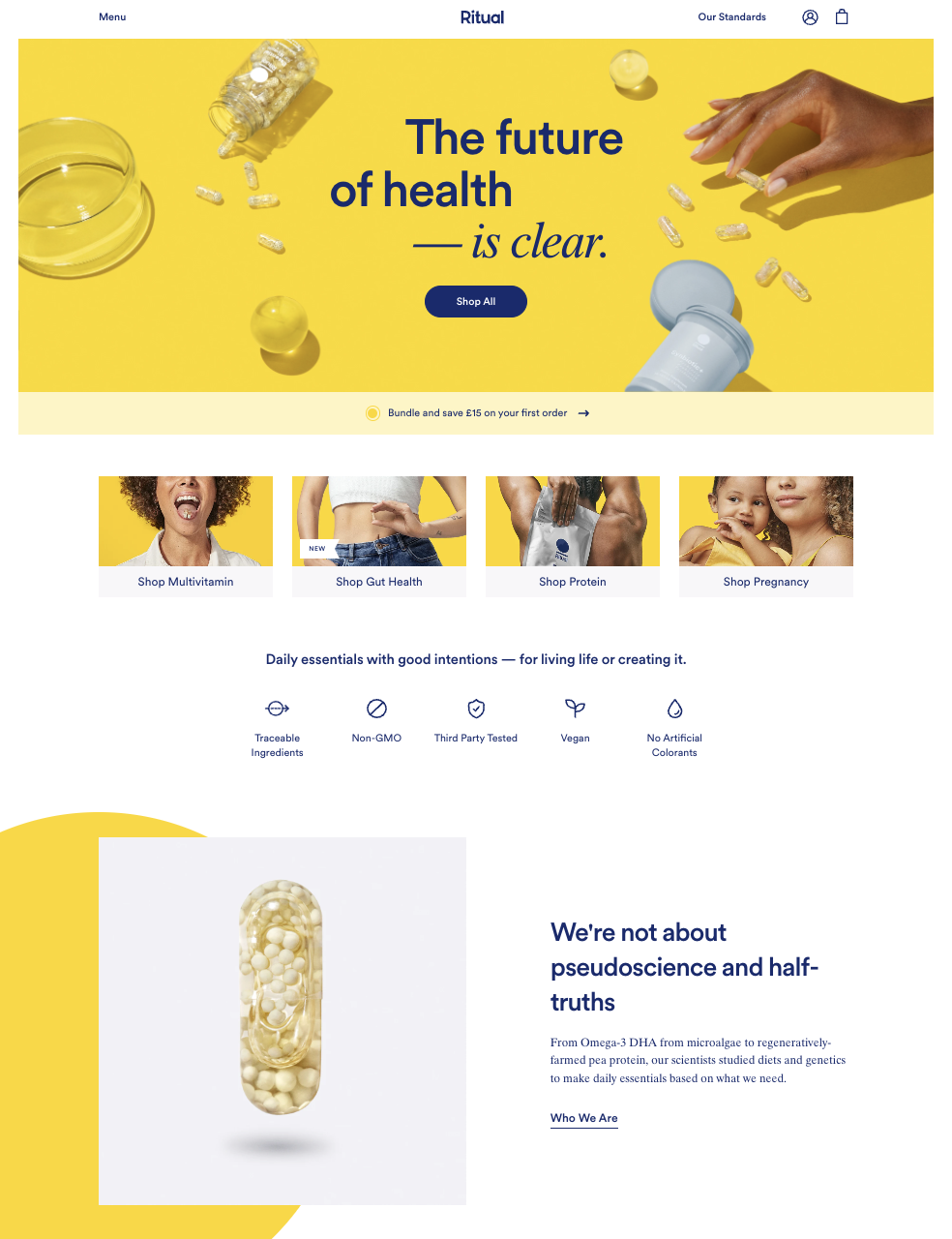
Image Source: Ritual
Ritual’s homepage clearly outlines the brand’s mission and the things that set it apart from other nutrition companies before finishing up with user reviews and links to top product categories.
3. Make It Easy To Find Products
Online shoppers don’t have the patience to scroll through thousands of SKUs to find what they’re looking for. It should be overtly clear where consumers need to go next and how they can find products.
Maximize your site’s internal search function by grouping together similar products, populating the search results with your bestsellers, and ensuring your product titles match the keywords shoppers are using to find items. 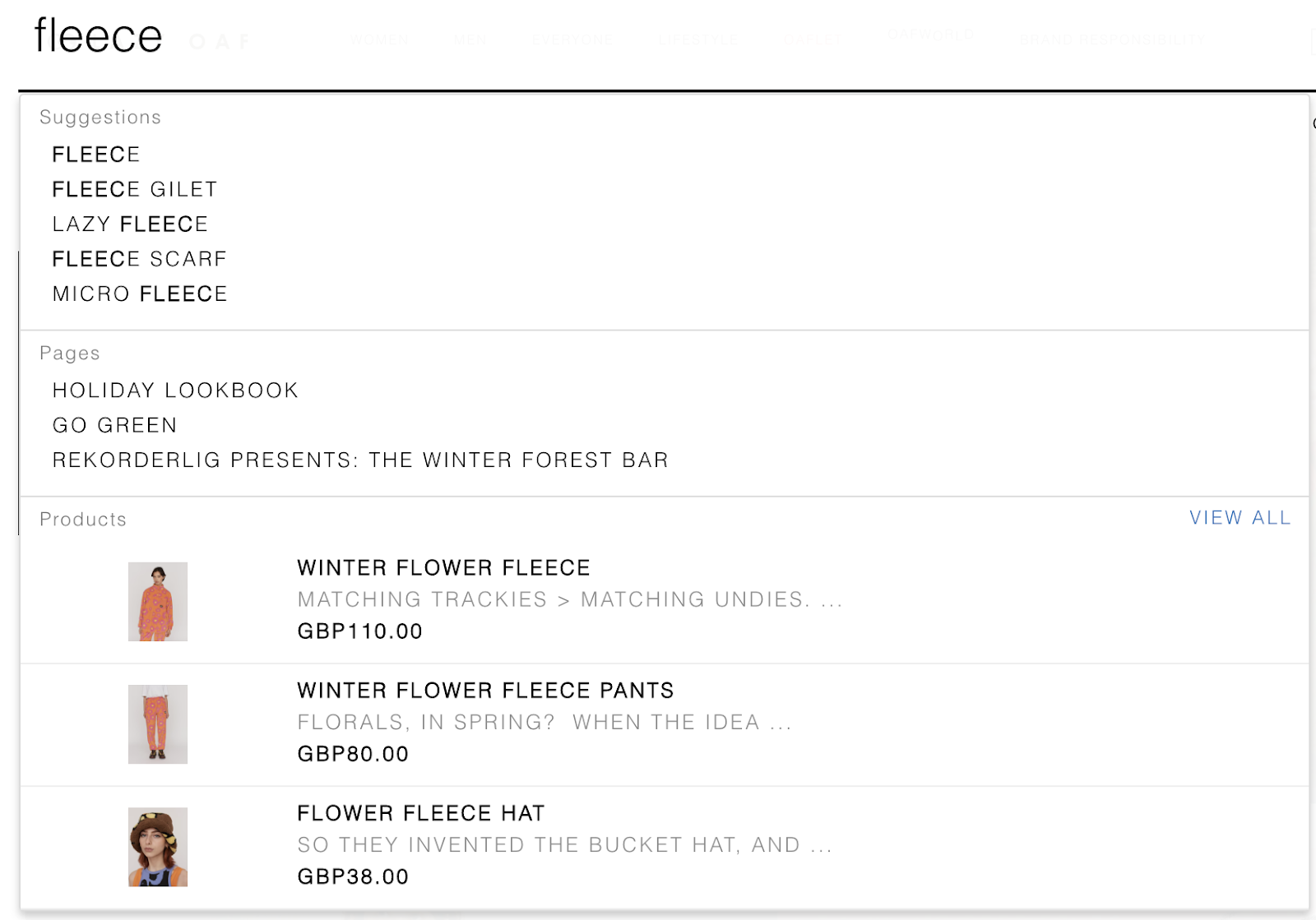
Image Source: Lazy Oaf
Lazy Oaf’s native search function serves results for individual PDPs, category pages, and relevant content, including lookbooks and blog posts.
4. Group Similar Products Together
When you walk into a physical store, there’s a high chance similar items will be grouped together in sections. Replicate this online by creating descriptive product categories that are rich and searchable.
As well as grouping products together by what they are, you can get creative and base groupings on function, size, color, and price. For example, if you sell bed linens, you can group together pillowcases, duvets, and sheets, as well as create cross-category groupings based on color, season, and style.
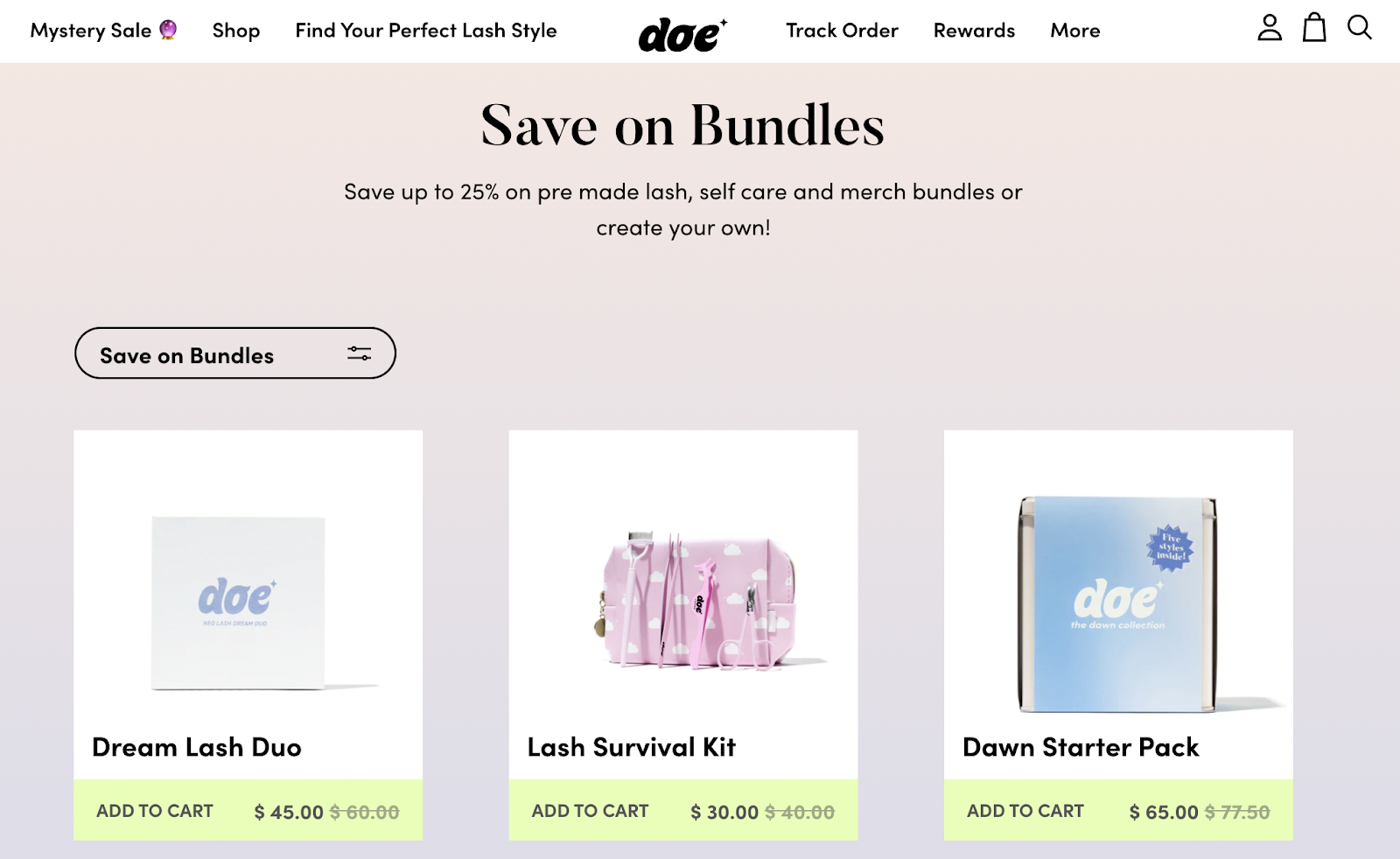
Image Source: Doe Beauty
Lash brand Doe Beauty groups together popular products in bundles, giving shoppers a chance to explore the brand’s entire product range.
5. Go Beyond Photos
Online shoppers don’t have the luxury of seeing a product in real life before they buy. As a result, they need extra reassurance in the form of photos and visual content — otherwise, how else will they know they like the color or shape?
But it’s not enough to display a couple of blurry pictures. Instead, populate your PDPs with rich multimedia content, including 360-degree photos, interactive images, video content, and user-generated content (UGC) to help shoppers build up a comprehensive picture of the product.
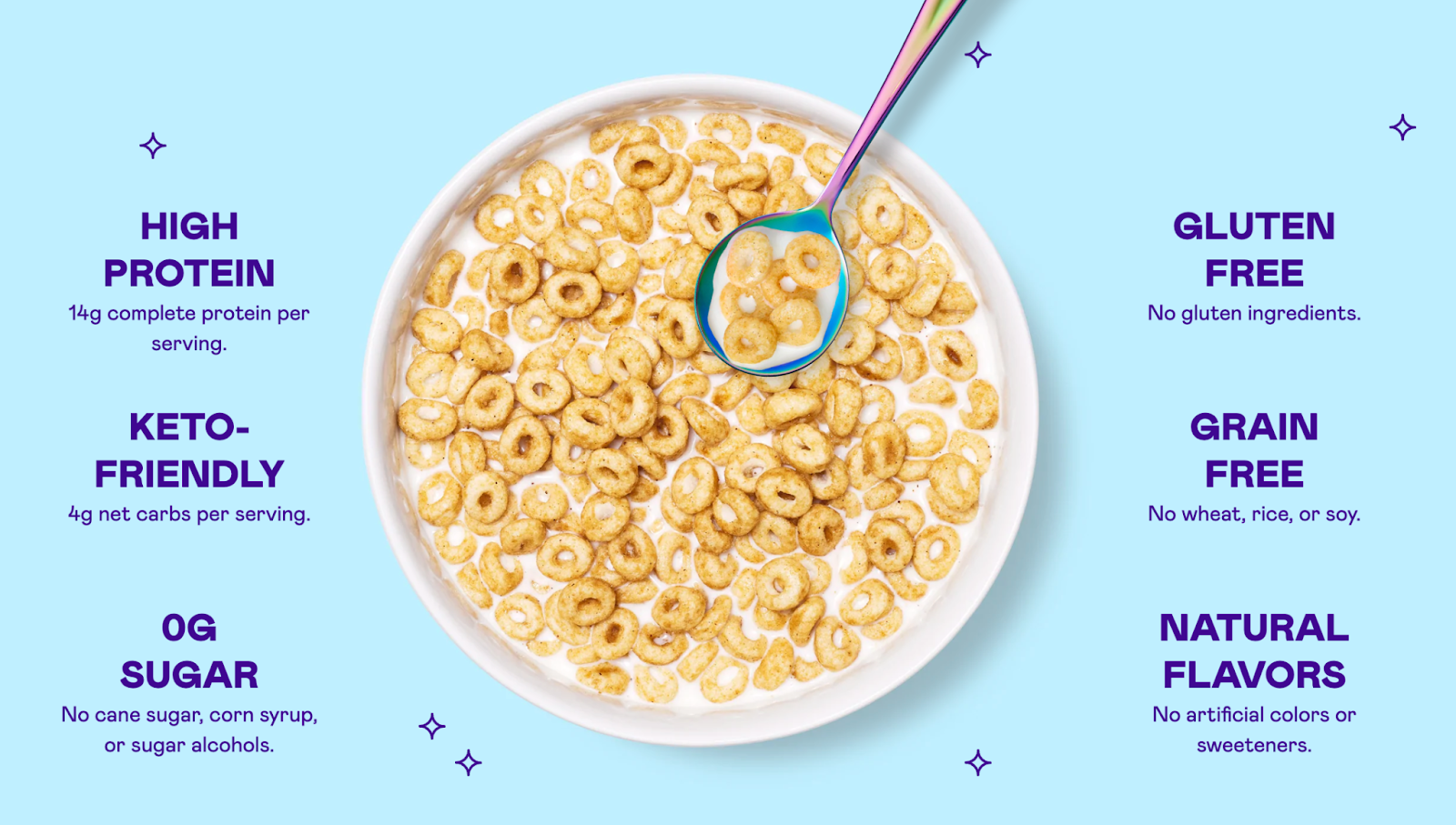
Image Source: Magic Spoon
Magic Spoon includes bold, interactive graphics on its PDPs that explain the benefits and details of each item.
6. Populate PDPs With Rich Information
A couple of sentences about your product won’t cut the mustard. For the best success with ecommerce merchandising:
- Create high-quality product descriptions.
- Spotlight key product characteristics.
- Share product benefits.
Use your audience research to discover what information resonates best with shoppers, and don’t stop there.
Help them paint a detailed picture of how they might use your product and why they should buy from you. This means populating each PDP with a rich array of information, including product materials, size, shape, price, color, shipping information, and use cases at the absolute bare minimum.
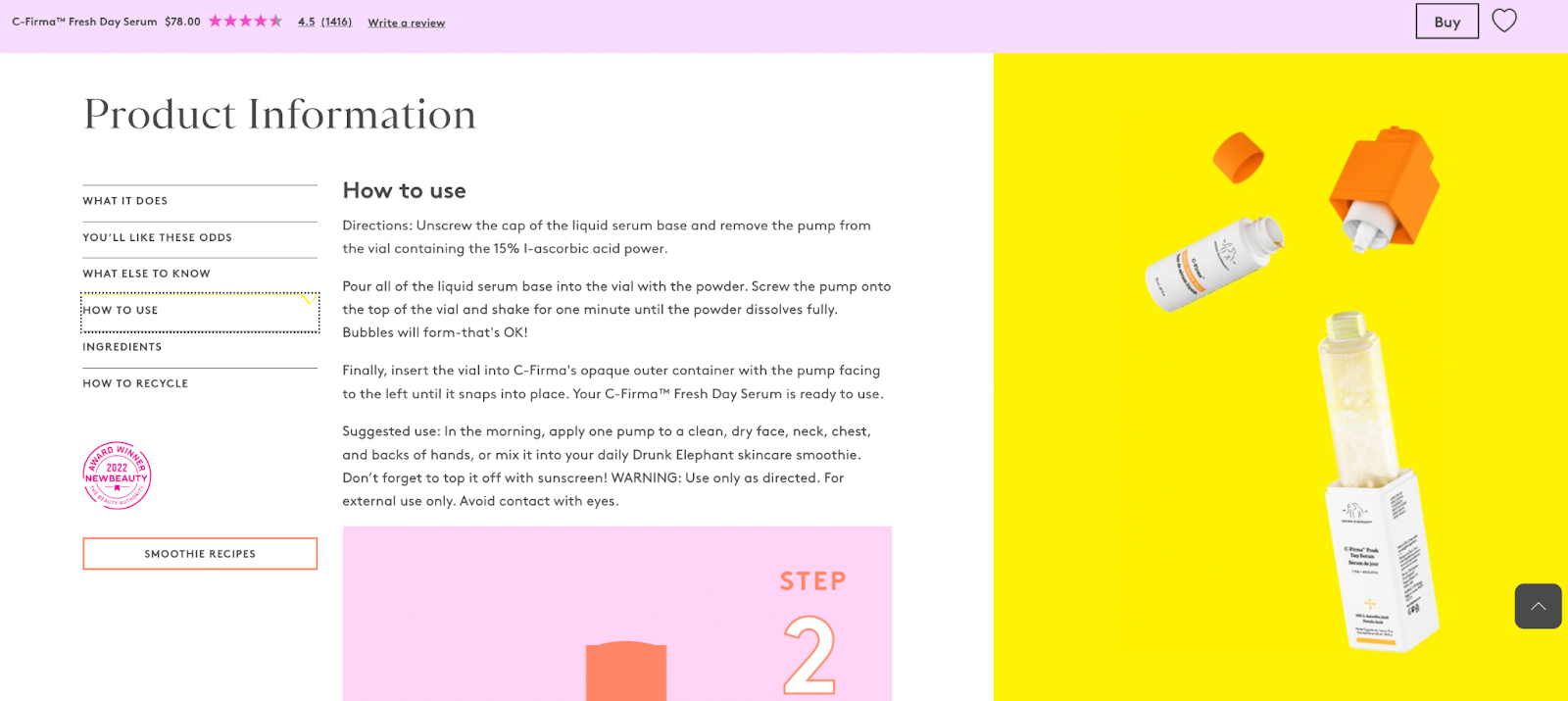
Image Source: Drunk Elephant
Cosmetic brand Drunk Elephant includes a dropdown menu where shoppers can learn more about use cases, ingredients, and other key information that’s presented in a combination of text and visuals.
7. Create a Customer-Centric Experience
Fierce competition today means it’s easy for shoppers to jump ship the moment they can’t find the information they need. Prevent this by putting the customer’s needs first. As well as rich PDPs, extensive reviews, FAQs, and powerful visuals, create content that reassures shoppers you’re a legitimate leader in your industry and continue to learn more about what your audience wants and needs over time.
Experiment with publishing blog posts, tutorials, product tips, and infographics to keep shoppers on site and provide extensive information about your brand, product, and industry.
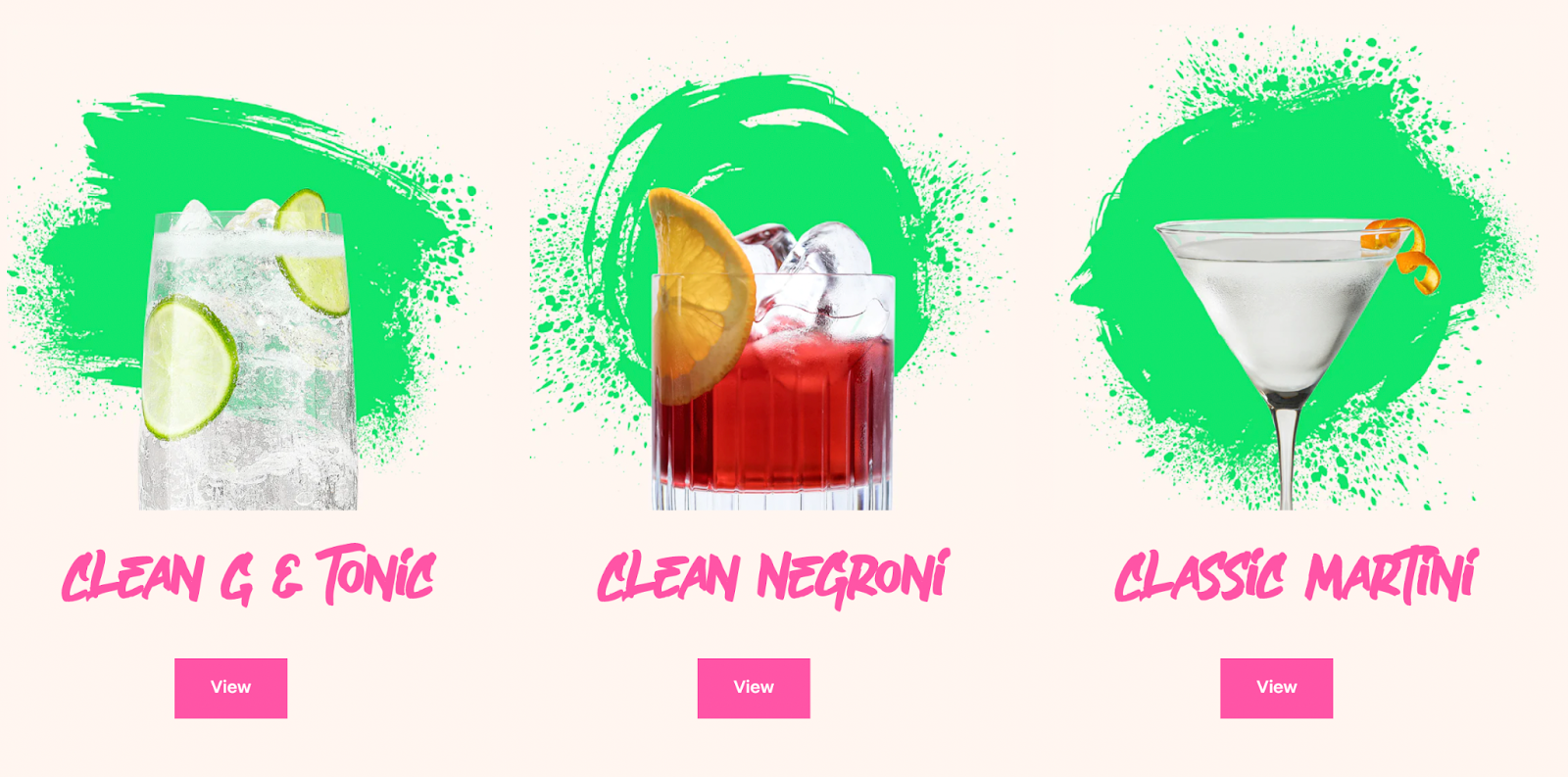
Image Source: Clean.co
Alcohol-free drinks brand Clean.co has published a manifesto of zero-proof cocktails that introduce shoppers to its unique range of spirits.
How a PXM Platform Helps You Keep Up With Changing Customer Preferences
Accurate product information is critical for building trust and loyalty — but how do you ensure you’re staying on top of it all? It’s down to you to continuously update product pages and accompanying content to align with shopper preferences and current trends.
A product experience management (PXM) platform helps fast-track the process of updating product descriptions to align with seasonal trends, populating multiple product variations with the most up-to-date content, and batch-updating your product catalog.
This is especially important for retailers with a large number of SKUs. Staying on top of customer demands, industry trends, and insights from your most recent deep dive into your analytics plays a huge part in creating an exceptional customer experience that keeps shoppers coming back.






